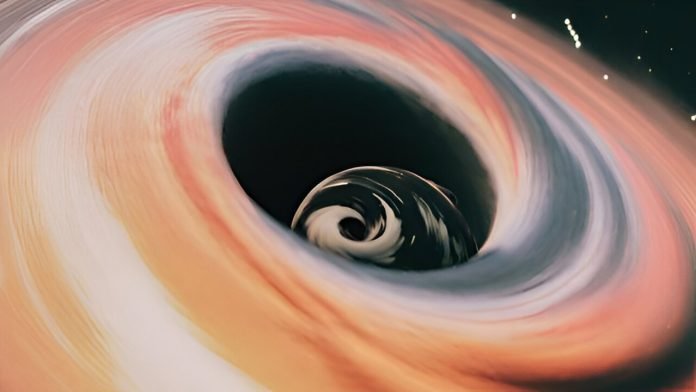
Astronomers have made an exciting discovery: black holes created from the collision of other black holes carry important information about their “parent” black holes.
This breakthrough could help us understand more about how black holes grow and evolve over time.
The findings were detailed in a paper published in Astroparticle Physics by Imre Bartos and Oscar Barrera from the University of Florida’s Department of Physics.
At the center of most galaxies, including our own Milky Way, lies a supermassive black hole. These black holes have masses millions or even billions of times greater than our sun.
Unlike smaller black holes, which form from the collapse of massive stars, supermassive black holes can’t be born directly from a single star because no star is large enough.
Instead, they grow by consuming gas, dust, and even stars around them. Another, quicker way for black holes to increase in mass is through a series of mergers with other black holes, creating larger and larger black holes each time.
Bartos and Barrera’s research reveals that black holes resulting from these mergers carry information about their predecessors, including their spin and mass.
“We find that black holes born from the collision of other black holes retain details about their ancestor’s properties,” Bartos explains. “Our new research focuses on reconstructing the spins of these ancestral black holes, building on previous work that looked at their masses.”
Black holes are characterized by just a few properties: mass, spin (or angular momentum), and electric charge.
Theoretical physicist John Wheeler famously summarized this by saying, “black holes have no hair,” meaning they lack distinguishing features. Despite this, Bartos notes that it’s possible to use a black hole’s spin to learn about its origins.
For instance, black holes that feed on surrounding gas or result from previous black hole collisions tend to have high spin. In contrast, black holes formed from the collapse of stars usually have low spin.
To conduct their study, Bartos and Barrera used a mathematical method called Bayesian inference. This technique takes known properties of black holes and prior expectations to infer the properties of their ancestors. This research is particularly relevant now, as scientists use gravitational waves—tiny ripples in spacetime—to study black hole collisions and mergers.
Recent observations suggest that black hole “assembly lines,” where multiple black holes merge one after another, might be common in the universe. This raises an intriguing question: how can we deduce the properties of ancestral black holes from the newest generation? Bartos is captivated by the challenge, describing it as a detective story where scientists uncover the past events that shaped these black holes.
In summary, this research provides new insights into the complex history of black holes. By studying the properties of black holes formed from mergers, scientists can trace back their origins and better understand the processes that create these fascinating cosmic objects.



